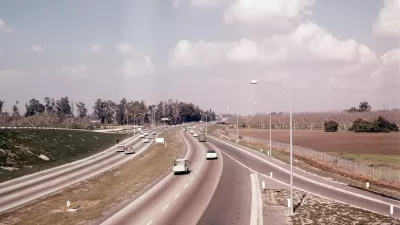While raw density numbers are sure to pick a fight, discussing character-based building typologies one neighborhood at a time may help find common ground.
Similar densities can vary widely in the level of livability they deliver. Susan Henderson demonstrates that with a couple of 52 DUA sites, and goes on to suggest that building types and designing to the neighborhood unit can help clarify the comparison:
"Instead of debating the number of units per acres, planners and city staff should consider addressing types of buildings that are permitted within different zoning categories. Not only is this the most understandable approach for the lay person, it's the most predictable for the builder and the city. This method of addressing density is supported by the latest zoning technologies including the SmartCode and a number of other Form Based Codes."
"Consider density at the scale of the neighborhood rather than the individual building. In the context of a neighborhood reflecting the average United States market for need and choice results in roughly: one acre of apartments per two acres of townhouses per four acres of single family houses. This delivers a net density of 10 units per acre for a complete neighborhood. Next time you're faced with a frightened crowd of density opponents, try turning the conversation to types of buildings, and allow that discussion to evolve into addressing the neighborhood as a whole, rather than simply a sum of its individual parcels."
Thanks to Hazel Borys
FULL STORY: The Dreaded Density Issue

Alabama: Trump Terminates Settlements for Black Communities Harmed By Raw Sewage
Trump deemed the landmark civil rights agreement “illegal DEI and environmental justice policy.”

Study: Maui’s Plan to Convert Vacation Rentals to Long-Term Housing Could Cause Nearly $1 Billion Economic Loss
The plan would reduce visitor accommodation by 25% resulting in 1,900 jobs lost.

Planetizen Federal Action Tracker
A weekly monitor of how Trump’s orders and actions are impacting planners and planning in America.

Wind Energy on the Rise Despite Federal Policy Reversal
The Trump administration is revoking federal support for renewable energy, but demand for new projects continues unabated.

Passengers Flock to Caltrain After Electrification
The new electric trains are running faster and more reliably, leading to strong ridership growth on the Bay Area rail system.

Texas Churches Rally Behind ‘Yes in God’s Back Yard’ Legislation
Religious leaders want the state to reduce zoning regulations to streamline leasing church-owned land to housing developers.
Urban Design for Planners 1: Software Tools
This six-course series explores essential urban design concepts using open source software and equips planners with the tools they need to participate fully in the urban design process.
Planning for Universal Design
Learn the tools for implementing Universal Design in planning regulations.
Caltrans
Smith Gee Studio
Institute for Housing and Urban Development Studies (IHS)
City of Grandview
Harvard GSD Executive Education
Toledo-Lucas County Plan Commissions
Salt Lake City
NYU Wagner Graduate School of Public Service





























